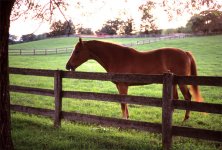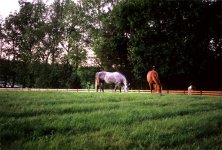Except for the Sonnar shifting more, I feel that wide open, the Summilux and C-Sonnar to be quite similar. From f2 onwards, the Summilux feels more or less like the v3 Summicron I once had, i.e. is sharper in the corners than the C-Sonnar, at least up to f2.8.
The v2 Summilux that I have now is very sharp in the center wide open and at infinity. This really surprised me. Not sure if the E46 that I once had behaves differently from the E43 that I have now. I do like the long focus throw in combo with M3 though, and convinced myself that 1m min. focus is OK, since I will carry the v2 together with a 90mm that is used if I want to get closer.
Here are some (ugly) test shots of the v2 wide open, to illustrate why I think it does behave similarly to the C-Sonnar:
- center:
- center cropped:
- corner:
- corner cropped:
- Bokeh: typical "blotchy", asymmetrical Mandler bokeh, like the 75/1.4. Focus on the coke can:
Cheers,
Roland.










